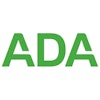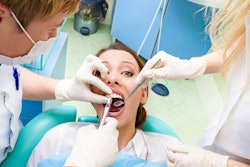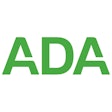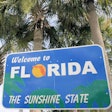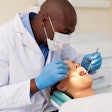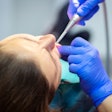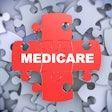
Obtaining accurate data on which dentists see Medicaid patients and how many patients they treat can be difficult. Researchers looked at these issues, and their findings suggest that Medicaid participation rates may be much lower than previously believed, they reported in a study published in the Journal of the American Dental Association (JADA, April 2019, Vol. 150:4, pp. 294-304.e10).
As part of a larger project to estimate the accessibility and availability of dental care for children, researchers examined data on Medicaid claims and providers. They found that caseload and provider participation were lower than some previous estimates, and that these factors varied widely by provider type, state, and location.
"This JADA study is one piece in the overall puzzle in assessing access to dental care for children in the U.S.," lead study author Nicoleta Serban, PhD, a professor of industrial and systems engineering at the Georgia Institute of Technology in Atlanta, told DrBicuspid.com.
Helping to gauge access
Determining what caseload level counts as meaningful Medicaid dental care participation and what caseload dental practices typically carry is important for determining oral healthcare access for children receiving dental coverage through Medicaid or the Children's Health Insurance Program, the authors noted.
However, previous studies have found that some related data are not reliable. For example, Medicaid participation estimated by the ADA Health Policy Institute (HPI) has been based on inclusion in the InsureKidsNow.gov database and not on actual caseload. Additionally, state-level estimates provided by HPI of access for children receiving public dental coverage have assumed the same caseload regardless of provider type (such as general or pediatric dentist) or location (such as rural or urban).
In the current study, the investigators sought to use data on Medicaid claims, provider type and caseload, and provider location to produce more accurate information for better understanding the level of public pediatric oral healthcare provided and needed, as well as inform policies and interventions for children enrolled in Medicaid.
To conduct the study, they used Medicaid Analytic eXtract medical claims data obtained from the U.S. Centers for Medicare and Medicaid Services (CMS) from 2012 and 2013. The study included data from 39 states for 2012 and from 20 states for 2013. Researchers included data on preventative or restorative oral care provided to Medicaid beneficiaries up to 18 years of age.
They also used provider-specific data from the 2013 National Plan and Provider Enumeration System, which includes information on healthcare providers through their National Provider Identifier (NPI).
Then they divided the providers into pediatric or general dentists or other oral healthcare providers and by urban, suburban, or rural practice location. They also separated out data for providers with claims for 11 or more Medicaid patients.
The researchers reported the following results:
- The NPI provider participation estimate by state was larger than those in the current study, with the differences for providers with at least 11 patients ranging from 7% (Ohio) to 64% (Iowa).
- More pediatric than general dentists participated in all states, with the difference ranging from 4% (Illinois) to 62% (Vermont).
- Seven states had a lower participation rate by rural dentists versus those practicing in urban communities.
- The median number of patients per provider for preventive care in 2012 ranged from 99 (Mississippi) to 358 (Virginia) and visits per provider from 344 (Ohio) to 1,901 (Virginia).
- The median number of patients per provider for restorative care in 2012 ranged from 39 (Mississippi) to 131 (Utah and Virginia) and visits per provider from 107 (Ohio) to 567 (Vermont).
- The caseload was more than twice as high for general dentists than other providers, which included mostly specialists, and more than twice as high for pediatric than general dentists.
"There is a large variability in the caseload dedicated to Medicaid-insured children among dentists, particularly when comparing across states," Serban told DrBicuspid.com.
The results also indicated that the median caseload was much lower than the 500 patients per provider minimum used in access estimates in other studies, with no states meeting that level.
Data has limitations
The data used in this study have some known drawbacks. Provider caseloads may be underreported, estimated preventive care caseloads may be generous, and the number of providers estimated may be low since some may not have an NPI, the authors noted
Serban explained to DrBicuspid.com that the larger-scale project of which this research is a part goes beyond access estimation.
"We plan to study the effectiveness of various interventions, such as loan repayment programs and school programs, as well as to better understand the impact of oral health policy," she said.



